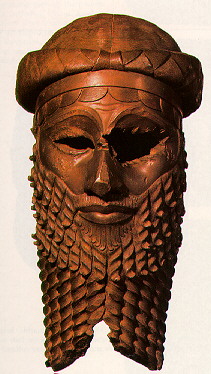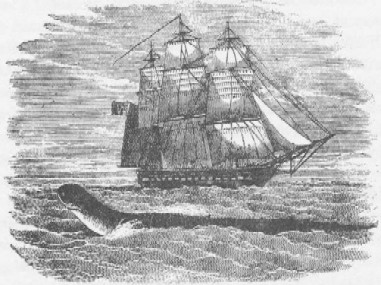First Sea Serpent Sighting: A Detective Story
Posted by: Loren Coleman on November 3rd, 2007

Sargon II
In the hot-off-the-press issue of The Anomalist 13, historical cryptozoologist Ulrich Magin examines, as he concisely says in the title of his article, “Sargon II’s Sea Serpent Sighting: The First Sighting in Cryptozoology?”
I’ve always enjoyed Magin’s high-quality bibliographical and original source research, and this article does not disappoint.
Magin gives the essence of his pursuit in his opening:
The Assyrian King Sargon had the first ever sighting of a sea serpent. Bernard Heuvelmans, in his In the Wake of the Sea-Serpents, writes: “Thus we learn that Sargon II, who reigned in Assyria from 722 to 705 B.C., saw a sea-serpent in the Mediterranean when sailing to Cyprus. This, so far as I know, is the first mention in history of a particular sighting of the subject of this book.” This information is of particular interest, as it is generally assumed that the history of the sea-serpent starts with Olaus Magnus‘ 1539 reference to such an animal on the Norwegian coast in his “Carta Marina.“
On the way to discovering the end to the mystery highlighted in the title (despite the misleading mistake that Heuvelmans never said the Sargon II sighting was anything more than the first Sea Serpent sighting, not the first cryptozoology sighting), this is a great essay.
Magin shows the confusion in the field, early on, when he starts to doublecheck on the sourcing of this “first” Sea Serpent sighting. He finds that a paper by paleocryptozoologist Adrienne Mayor in Cryptozoology, lists all ancient mentions of sea-monsters, among them – yet without any reference – a “Sargon of Akkad inscription.”
Magin notes, however, “Sargon of Akkad (or Sargon the Great) is not the same person as Sargon II of Assyria. Sargon of Akkad lived around 2300 BC while Sargon II ruled in the 8th century BC. These are two different rulers – but which one saw the sea-serpent?”
Magin points out that the first Sargon has no surviving inscriptions, and takes us through his investigation to come to the conclusion he makes.
Without spoiling anything, I can say Magin says it appears Mayor made a mistake, as we discover in his cryptozoological detective story. But I’ll stop there. Who am I to give away a good ending?
Magin also comes forth with a couple other unique discoveries, new to cryptozoology, which he made along the way and he records in this essay. Magin even delights us with mini-findings in his footnotes, like this one:
John Ashton: Curious Creatures in Zoology. Cassell, New York 1890, p. 268-278. Ashton also mentions a merman on the same sculpture, obviously he had a recent press account or book on the excavations as his source: “But, undoubtedly,“ he writes, “the earliest representation of the real Merman – half-man, half-fish – comes to us from the uncovered palace of Khorsabad. On a portion of its sculptured walls is a representation of Sargon, the father of Sennacherib, sailing on his expedition to Cyprus, B.C. 720 – on which occasion he had wooden images of the gods made and thrown overboard in order to accompany him on his voyage. Among these is Hea, or Oannes, which I venture to assert is the first representation of a Merman.“ -Ashton, p. 127.

This article is a great contribution to the field of cryptozoology, and certainly should be collected by all interested Sea Serpent fans, researchers and scholars.
The journal itself maintains the high intellectual standards of past issues, and contains remarkable Fortean essays on an 1845 bridge collapse, a Spring-Heeled Jack type character of 1930s-1940s Cape Cod, Nephites, bioanomalistics, earthquake lights, and other phenomena. The contributors are Victoria Alexander, Loren Coleman, Sharon Hill, David Hricenak, Mark Macy, Ulrich Magin, Gary Mangiacopra, Theo Paijmans, Nick Redfern, John Reppion, Dwight Smith, and Cliff Willett.
Intermediate States which is The Anomalist 13: A Nonfiction Anthology edited by Patrick Huyghe & Dennis Stacy, was released this week and is now available in Japan, Germany, Canada, UK, USA, and France.
About Loren Coleman
Loren Coleman is one of the world’s leading cryptozoologists, some say “the” leading living cryptozoologist. Certainly, he is acknowledged as the current living American researcher and writer who has most popularized cryptozoology in the late 20th and early 21st centuries.
Starting his fieldwork and investigations in 1960, after traveling and trekking extensively in pursuit of cryptozoological mysteries, Coleman began writing to share his experiences in 1969. An honorary member of Ivan T. Sanderson’s Society for the Investigation of the Unexplained in the 1970s, Coleman has been bestowed with similar honorary memberships of the North Idaho College Cryptozoology Club in 1983, and in subsequent years, that of the British Columbia Scientific Cryptozoology Club, CryptoSafari International, and other international organizations. He was also a Life Member and Benefactor of the International Society of Cryptozoology (now-defunct).
Loren Coleman’s daily blog, as a member of the Cryptomundo Team, served as an ongoing avenue of communication for the ever-growing body of cryptozoo news from 2005 through 2013. He returned as an infrequent contributor beginning Halloween week of 2015.
Coleman is the founder in 2003, and current director of the International Cryptozoology Museum in Portland, Maine.










Interesting,